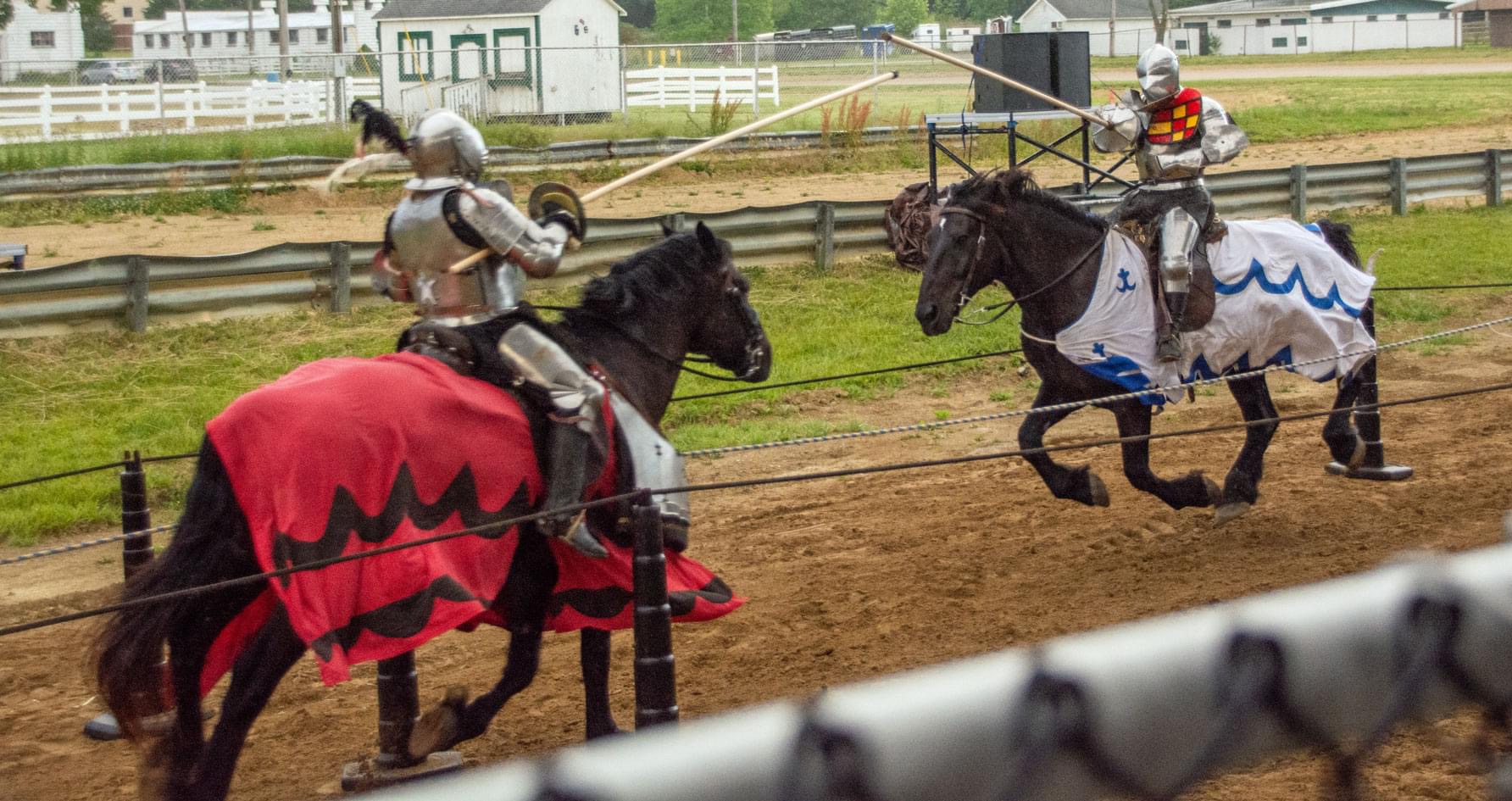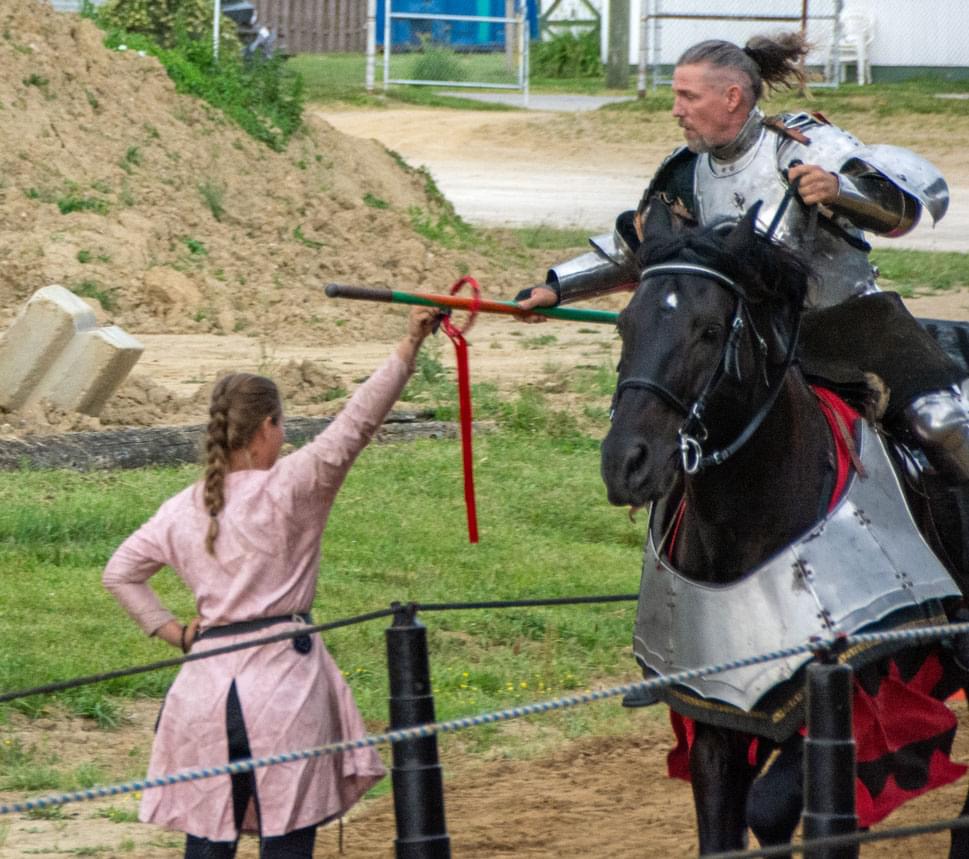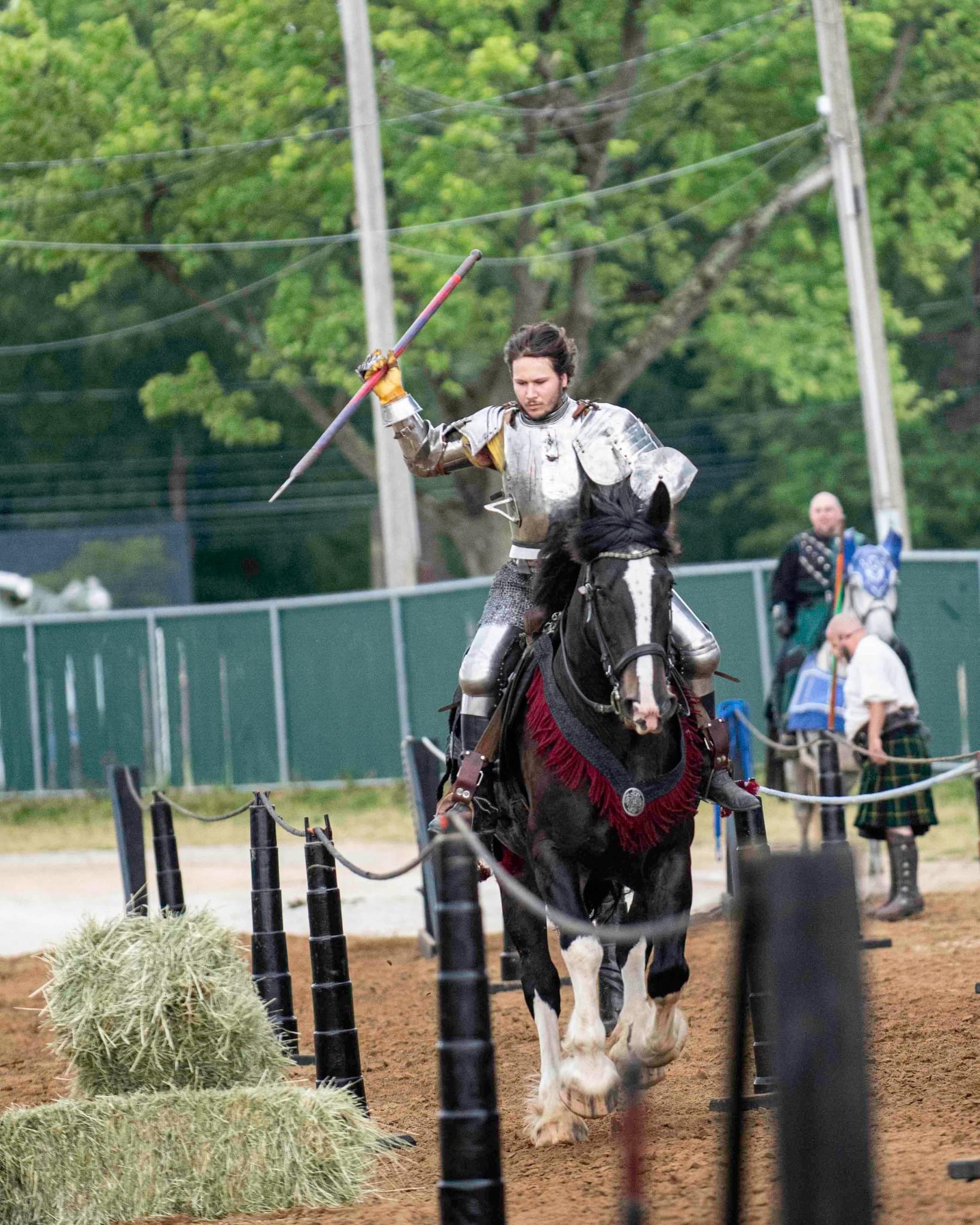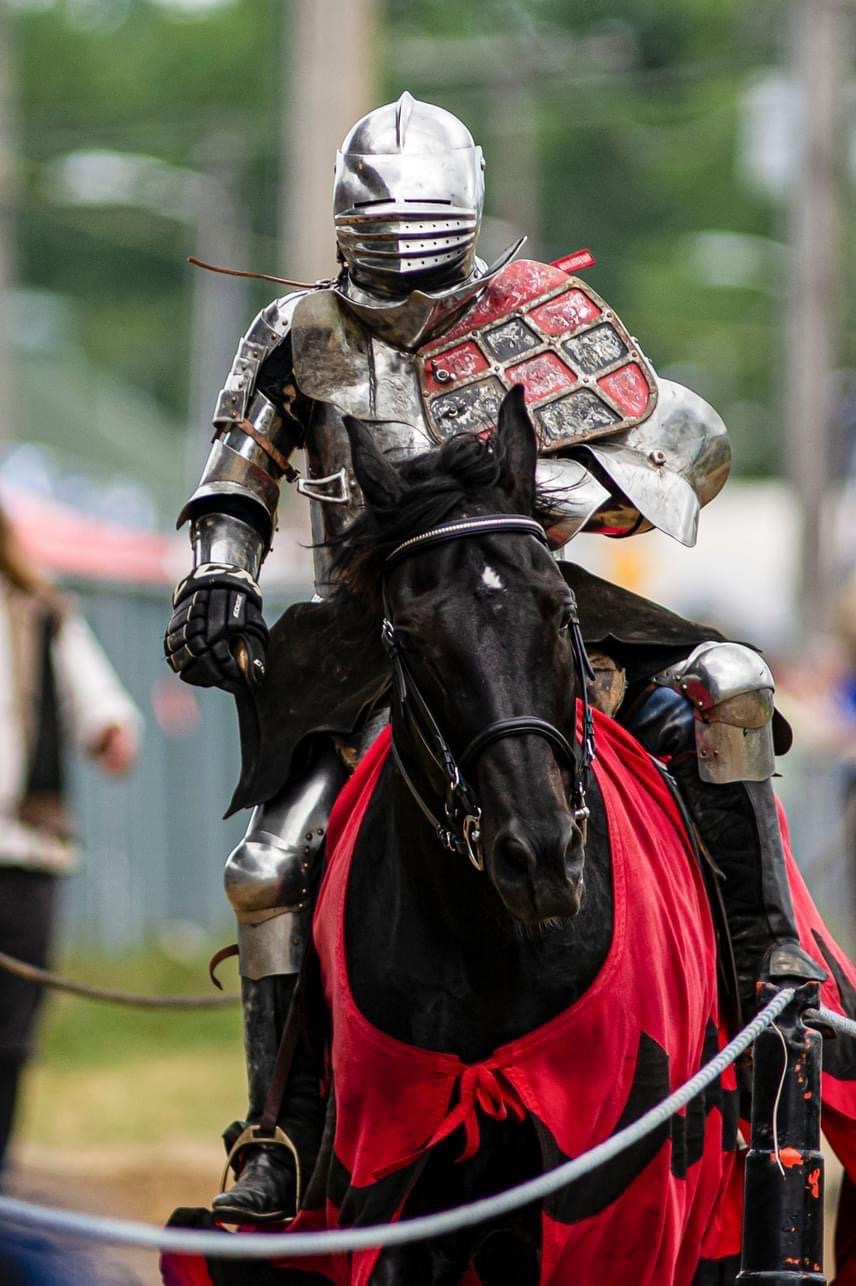Festival
The 42nd Highland Regiment of Foot is a Revolutionary War period reenactment group based out of Marion, OH. They are sponsored by the Tri-Rivers Career Center, Culinary Arts and will demonstrate what it was like living in the 42nd regiment during the Revolutionary War.
The Barony of the Cleftlands is the Cuyahoga County (Cleveland), Ohio chapter of the Society for Creative Anachronism, Inc. The Society for Creative Anachronism (SCA) is an international non-profit volunteer educational organization. The SCA is devoted to the research and re-creation of pre-seventeenth century skills, arts, combat, culture, and employing knowledge of history to enrich the lives of participants through events, demonstrations, and other educational presentations and activities. The SCA’s “Known World” consists of 20 kingdoms and over 30,000 members around the globe.
As a sport falconry has been around for 4,000 years. It developed in the ancient civilizations of the Middle East, Asia, and Europe.
The first documented English falconer was in the eighth century. Falconry was so important to English society that one could rarely walk down the medieval streets without seeing someone with his or her falcon perched on hand on wrist. The Stuarts were particularly fond of the sport of falconry, with Henry VIII being considered by some as the most important falcon advocates.
Falconry in Ireland started to make an appearance around the 12th Century with the arrival of the Anglo Normans. Here, too, it was deemed a pet project of the nobility – until the everyday Irishman worked out that there was money and prestige in flogging hawks to rich noblemen. Soon Ireland became synonymous with providing the best hawks available.
In the United States, the sport of falconry is practiced much as it always has been since its inception. There are roughly 4,000 licensed falconers in the United States, with only about 70 of those located in the state of Ohio.
Originally called Scottish sheep dogs, border collies are energetic descendants of Viking reindeer-herding dogs and are one of the most popular herding breeds in the world. It has been bred for centuries to work closely with man and is happiest when exercising its herding and fetching instincts. Its willing and devoted personality thrives on praise. Its unique, heritable trait enables the Border Collie to have a remarkable mastery of livestock without frightening them.
Border Collies derive its name from the border country between Scotland and England. The “working collie” established itself as the most valuable asset a flock owner could have. In old Gaelic “collie” was the rural term for anything useful — a “collie dog” was a useful dog. Because this breed flourished in the border region, it was christened the “Border Collie.”
Border Collies were exported to sheep farms and ranches in Ireland, United States and all over the world for their superior intelligent and tireless energy.
The Border Collie is one of the most intelligent of all breeds of dogs. It has been bred for centuries to work closely with man and work is a Border Collie’s passion. It is happiest when exercising its herding and fetching instincts. Its willing and devoted personality thrives on praise. Its unique, heritable trait, an attitude referred to as “the eye” enables the Border Collie to have a remarkable mastery of livestock without frightening them. There is no standard appearance since Border Collies are bred solely for their work ethic.
Ohio shepherdesses & dog trainers Esther and Edie will be putting on showcases of these border collies all weekend.
Each year, dozens of British car and motorcycle enthusiasts join us to show us their cars and bikes as well as to share their knowledge. It is a great opportunity to meet! We will be featuring the Lorain County British Car Club.
Join the registered Clans Friday evening as the clans announce their presence symbolizing the opening of the Games.
To have your clan registered, please use this link.
The fiery cross was a means of communicating among clans and was principally used as a signal for the clan to gather together. It could signify the birth of the clan chief's first son, the announcement of highland games or it could be a callout to rally clan members to arms.
The cross was usually made from yew or hazel wood and set alight and was often tied together with strips of cloth dipped in goat's blood.
The torch would then be carried throughout the region by clan runners shouting their clan's war cry letting everyone know where and when to gather. As runners tired, they would be replaced (similar to a relay team), allowing them to cover a wide area very quickly. In the case of a call to arms, each clan had a designated meeting point, and all men able to fight were expected to gather there, armed and ready for action.
Today, the torch signifies the connections we share within our families, heritage and community.
For over forty years the Scottish-American Cultural Society of Ohio, Inc has organized the Ohio Scottish Games & Celtic Festival, a celebration of Scottish culture and traditions. This is all possible for the descendants from various clans and Celtic families. We continue to celebrate our Celtic roots, and we showcase these clans and cultural groups.
To have your clan registered please follow this link.
The following clans will be in our Clan Village this year:
Clan MacLeod
Clan Donald
Scottish Cultural Garden Society
Clan Murray USA
Clan MacEwen
Clan Gunn
Dandie Dinmont Terriers
Clan MacAulay
Scottish Heritage Association of Northeast Ohio (SHANO)
Crawford International Society/Crawford
Clan Douglass
Clan Edmonstone
Clan MacTavish
Clan Campbell
Clan Hay Society - American Branch** (hosting their 2025 AGM at the games)
Clan Hamilton Society
Clan Claus Society
Buchanan Society International
Clan Fleming
Clan Gregor
Clan Stewart Society in America
Clan MacGillivray
Clan Rattray
Muirhead Clan Society
Ohio Scottish American Society
Isle of Man
For clans interested in using the Games as a location for their AGM or other clan activities please inquire with the Clans coordinator!
Our Honored Clan this year will be Clan Campbell
Our Chieftain of the Day is Carol Linsenmeier
Ohio Deputy Commissioner Carol Linsenmeier has been a member of the Clan Campbell Society North America for 20 years. She comes from a long line of Campbells through her mother who was born Alys Elizabeth Campbell. Carol has worked at the Ohio Scottish Games in the Clan Campbell booth for 19 years. Carol also celebrates her Scottish heritage by teaching fiddle as well as violin, viola, cello, and mandolin lessons at the Fine Arts Association in Willoughby, Rabbit Run Community Arts Association in Madison, and the Ashtabula Arts Center.
Axe throwing is provided by Lumber Legends - Cleveland Axe Throwing. Axe throwing can be done by anyone of any size, thus an equal playing field for everyone in your company is created where a true exhibition in adaptability, quick learning, and ample amounts of confidence.
Amanda Epperson will be joining us and will host discussions on Scottish Genealogy as well as how the Scots influenced Ohio's history. Amanda Epperson is a writer, lecturer, and professional genealogist. She holds a PhD in history from the University of Glasgow, with emphasis in emigration from Scotland to the United States.
Amanda is Author of About the Family Tree Scottish Guide. Amanda will help you uncover your Scottish heritage, from identifying your immigrant ancestor to tracking down records in the old country. You will learn about church records, civil registrations, census and more. Plus, how to find them in on-line databases and in archives. Amanda will discuss basic information on how to start family history research including identifying and tracing immigrant ancestors; Step-by-step for finding and using records from both the United States and Scotland; Crash course Guides to Scottish history, geography, surnames and naming conventions.
Whether your ancestors hail from the highlands or the bonnie, bonnie banks of Loch Lomond, she will help you grow your family tree in Scotland.
The Grand Parade is replacing the Opening Ceremonies of years' past. The parade will include all competitors and clans who are attending the games. The parade will begin at noon on Saturday, June 22, 2024 and proceed to match through the grounds.
The calm, dignified, and kindly Irish Wolfhound is the tallest of all AKC breeds. Once fearless big-game hunters capable of dispatching a wolf in single combat, Wolfhounds today are the most serene and agreeable of companions.
Irish Wolfhound exhibit will be open Saturday until 5 PM next to the Wee Ones' Area
Dandie Dinmont Terriers first showed up in a Gainsborough painting in 1777. They are the only breed of dog named for a fictional character, a farmer, Dandie Dinmont, who was a character in Sir Walter Scot’s 1815 novel, “Guy Mannering”
Today the Dandie Dinmont Terrier is one of the rarest and most endangered of all purebred dogs. The Dandie is a true terrier made up of all curves instead of the straight lines of most terriers. The come from the Scottish border country and are the only breed to have tehir own officially sanctioned tartan.
The Dandie combines an affectionate and dignified nature with tenacity and boldness. The Dandie Dinmont Terrier is known as “the gentleman of Terriers”.
Dandie Dinmont Terrier exhibit will be in the Clan Village
The Knights of Valour jousting troupe has the resources and equipment necessary for the accurate and authentic representation of the days of Knights from past to present.
We have tournament shows designed for a wide range of educational curricula.
In 1997, Shane Adams entered his first competitive tournament at the U.S. International Jousting Championships in Estes Park, Colorado. On a borrowed horse, using unfamiliar equipment, he rose to the challenge and won the title.
From one member in 1997, to over ten full-contact competitors in 2005, the Knights of Valour Jousting Troupe continues to be the premier full-contact jousting troupe in North America.
Check out the knights in action!





Open sessions are designed for all those attending the games to play music so, grab your whistle, harp, fiddle, guitar, flute or smallpipes and join in the fun! Come by on Friday and Saturday to take part or listen.
Our premier event will take place at 6:30 PM on Saturday. The Twilight Tattoo is led by the massed pipes & drums as they will perform with performances by highland dancers, harpists, fiddlers, and the Brass Band of the Western Reserve
The anthems will be sung, and competition winners will be celebrated. The Massed Pipes & Drums will perform Flowers of the Forest to honor those who have passed in the last year as well as Scotland The Brave and the ever popular Amazing Grace.
This area of the fairgrounds features multiple interactive inflatables, catapults for sieging the Castle, and just one of the numerous Celtic themed Photo-Op cut-outs.
The Wee Ones' Area also conducts the Children Games! These events are modified highland athletic games suitable for Children. Children Games take place once on Friday and three times on Saturday. Children will be divided into 5 groups: 2-4 year old’s, 5 year old’s, 6-7 year old’s, 8-9 year old’s, and 10-11 year old’s. Medals/ribbons will be awarded.
The Whisky Tasting will include six single malt/single pot whiskies.
This event did sell out in advance of last years event so we encourage you to get your tickets early. (On the ticketing page, admission tickets must be selected for purchase in order to display the whisky tasting ticket).
Each ticket entitles you to a tasting of six one ounce pours of Single Malt/Single Pot Whiskies. Tickets can be shared as we realize not everyone can drink 6 shots of whisky. You will also receive a complimentary Glencairn tasting glass.
The exhibit will include information about each whiskey with the characteristics of each region. Learn more about whisky here!
2025 Whiskies
Ard Beg 10 yr
Delwhinnie 15 yr
Glenmorangie 10 yr
Lagavulin 16 yr
Oban 14 yr
Talisker 10 yr
Also available in the Whisky Tavern are mixed drinks made with both single malt and blended Irish & Scotch Whiskies.
The festival encourages everyone to join in the culture, and seeks to educate all on Celtic traditions.
On Saturday, the Festival hosts Try the Arts For First Timers workshops.
Come by the Workshop tent to try out bagpipes and drumming.
You can also head over to the Harp Building to try the harp.
Try Highland dancing for first timers will take place in the Clan Village.
New for 2025 in the Children's Area
Great Lakes National Puppet Theater
Vincent Polowy
Artistic Director.
The Theater performs puppet shows primarily for libraries and private events, they have additionally performed at the Great Lakes Medieval Festival and the Irish Cultural Festival.
This year's festival will feature two productions
Rumplestiltskin
The classic tale from the Brothers Grimm, comes to life in this delightful adaptation. Performed using exquisitely sculpted hand-and-rod puppets, this production is sure to delight audiences young and old. An original musical score further enhances the drama and charm as a poor miller tries to impress the king with the news that his daughter can spin gold out of straw. Unable to do so, the girl soon finds herself face-to-face with a strange, little man. Whimsical and appealing in it's colorful visuals and charm, "Rumpelstiltskin" reflects ideal family entertainment.
Little Red Riding Hood
Charles Perrault's classic tale of a little girls adventures in the woods. "Little Red Riding Hood" is presented using rod puppets, mask, and "Muppet-type" hand puppets that children are sure to love. Join "Little Red", as she journeys to visit her sick grandmother. Along the way, she sees flowers, insects, a variety of animals, a friendly woodcutter and of course, the "not so" Big Bad Wolf! Also, a lesson in healthy eating, this fast-paced and colorful production is geared for younger audiences, as well as for family programming. The perfect addition to any pre-school, primary school, library, or festival entertainment schedule.
To find out more, check out this link
This year’s VIP(Very Important Patron) Building is the ultimate way to enjoy the Games! This retreat of cool and peacefulness is located right in the center of the action. This is also the area where the various musicians of the festival spend time when not entertaining. Dine with Games officials, judges, and dignitaries attending the games
VIP’s benefits including:
· Full weekend Admission to the VIP building (Friday and Saturday).
· Complimentary meals, snacks and non-alcoholic beverage service.
· Air-conditioned respite.
· Premier VIP Parking.
· Private VIP only restrooms.
· VIP only Raffle.
· Relax and enjoy Celtic culture in style at the VIP building while helping support the games charitable mission – The annual Ohio Scottish Games and Celtic Festival and Ohio Scottish Arts School for cultural, educational, physical and spiritual benefit for those with an interest in the traditions of Scotland and other Celtic Nations.
Open Friday 4:45 to 9pm (buffet-style dinner 5 to 630p)
Saturday 830a to 8pm (Continental Breakfast 830 to 10a)
(Buffet-style Lunch 1130 to 1230p)
(Buffet-style Dinner 5-6 pm)